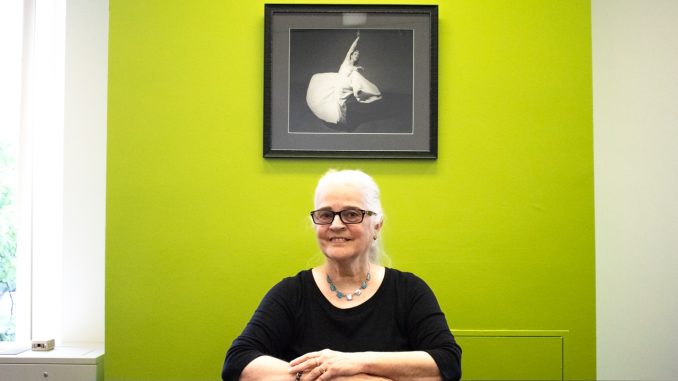
Karen Bond never wanted to be a professional dancer.
“I didn’t [want] to just train, train, train, train in one specific thing,” Bond said.
The chair of the Department of Dance at the Boyer College of Music and Dance explored dance in multiple countries and spent 24 years in Australia where she completed a Ph.D. in dance education.
Bond also ran a graduate dance education and research program at the University of Melbourne before beginning her work at Temple University in 2000.
This language of dance wove its way through the 31 chapters of her first book “Dance and The Quality of Life,” set to publish in October.
“It was a six-year labor of love,” Bond said.
The book is Volume 73 of the Social Indicators Research Series, a book series that offers research and statistical assessments on the relationships between a variety of subjects and quality of life, which began in 1997.
Bond led the project and organized the anthology, written by 46 different authors from 14 different countries. Thirteen of the authors are Temple dance alumni.
The book, dressed in a cherry-red cover similar to Temple’s signature color, seeks to educate readers about dance.
“Humans started dancing very early on for communication, for healing, to educate each other,” Bond said. “It’s a mystery why dance is so underrepresented in scholarly discourse.”
The book is the first volume of the series written about dance and its effect on quality of life. Bond said Springer publishing company commissioned her to put together the book in 2012.
“I just instantly knew that this was what I wanted to do,” she said. “My interest in dance has been about quality of life.”
Quality of life studies evaluate the variables that play into happiness and fulfillment in life. Bond said the book’s range of subject matter and writing style differentiates it from other dance anthologies of its kind.
Some chapters of the book include statistical analysis, while others are personal narratives about the author’s relationship to dance.
Bond said the least conventional chapter was written “straight from the heart.” Authored by Dr. Teresa Benzwie, a 1981 dance education doctorate alumna and a psychotherapist in Cherry Hill, New Jersey, the chapter chronicles her long journey with dance.
When Benzwie began studying at Temple, she was a single mother raising three boys and working full time as a kindergarten teacher in Camden, New Jersey.
She said she found joy integrating dance into her lesson plans and credited mentors at the university for supporting the team efforts behind the book.
“I come from a dream world, and I still have my dream world at 83,” Benzwie added.
She started the Teresa Benzwie Dance in Education Award to give back to the dance department in 2007. The money comes from a grant she supports monthly. The number of award winners varies each year depending on interest and funds, but Benzwie always chooses the recipients.
About 10 years ago, Bond suggested Benzwie mentor the recipients. Now, Benzwie and award winners work together to teach basic numbers, letters and other academic skills to preschoolers at the Barclay Early Childhood Center in Cherry Hill, New Jersey, through dance – the same technique Benzwie used during her days teaching kindergarten.
“In the process, we become close,” she said. “They learn how to appreciate the students and to appreciate themselves as well.”
Apart from her writers, Bond’s largest help in publishing the book came from Sally Gardner, a former student of Bond’s from the University of Melbourne who served as a consulting editor for “Dance and the Quality of Life.”
Gardner and Bond communicated via Skype and email, not letting time differences nor the approximate 10,000-mile separation come between their hard work and the book’s publication.
Gardner co-wrote two chapters of the book, while Bond wrote the introduction, first chapter and co-authored two chapters.
Gardner was a young mother when she took Bond’s classes in 1989 and 1990. She said she has fond memories of Bond letting her child play in the corner of the room during class.
“It’s been a big experience working on this book and working with Karen,” said Gardner, who added that Bond was a key figure in her education. “Her commitment to the individual authors and their writing was very inspirational.”


Congratulations, Karen! I’m looking forward to owning and reading the book. It sounds wonderful! All best.
Congratulations Karen. Would love to have a copy too. Best wishes.
Kudos! What a timely topic. Thanks for all the work I am sure it involved!
Brava, Karen! I cannot wait for this read and to share its gems with my students